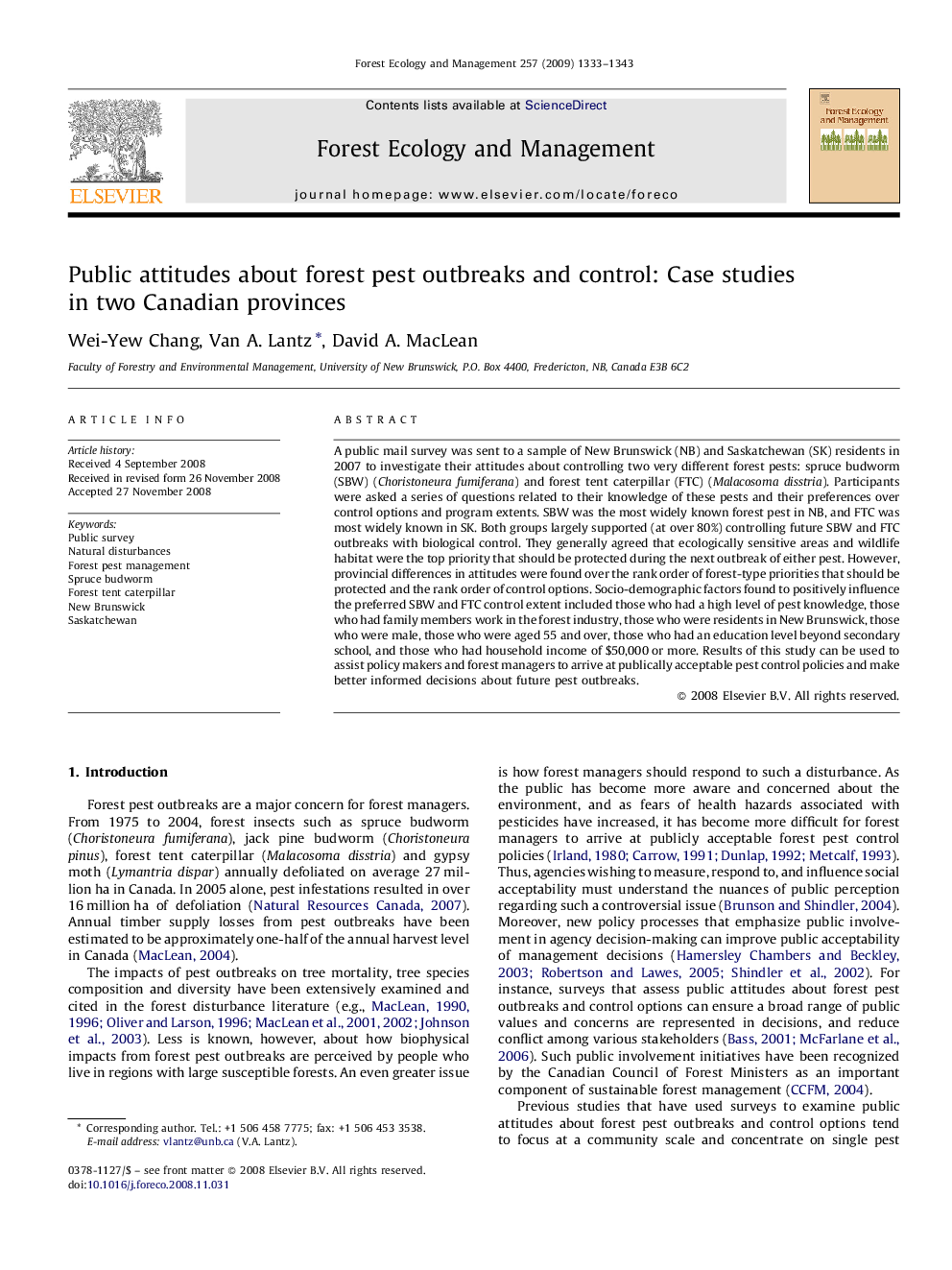| کد مقاله | کد نشریه | سال انتشار | مقاله انگلیسی | نسخه تمام متن |
|---|---|---|---|---|
| 88605 | 159310 | 2009 | 11 صفحه PDF | دانلود رایگان |

A public mail survey was sent to a sample of New Brunswick (NB) and Saskatchewan (SK) residents in 2007 to investigate their attitudes about controlling two very different forest pests: spruce budworm (SBW) (Choristoneura fumiferana) and forest tent caterpillar (FTC) (Malacosoma disstria). Participants were asked a series of questions related to their knowledge of these pests and their preferences over control options and program extents. SBW was the most widely known forest pest in NB, and FTC was most widely known in SK. Both groups largely supported (at over 80%) controlling future SBW and FTC outbreaks with biological control. They generally agreed that ecologically sensitive areas and wildlife habitat were the top priority that should be protected during the next outbreak of either pest. However, provincial differences in attitudes were found over the rank order of forest-type priorities that should be protected and the rank order of control options. Socio-demographic factors found to positively influence the preferred SBW and FTC control extent included those who had a high level of pest knowledge, those who had family members work in the forest industry, those who were residents in New Brunswick, those who were male, those who were aged 55 and over, those who had an education level beyond secondary school, and those who had household income of $50,000 or more. Results of this study can be used to assist policy makers and forest managers to arrive at publically acceptable pest control policies and make better informed decisions about future pest outbreaks.
Journal: Forest Ecology and Management - Volume 257, Issue 4, 20 February 2009, Pages 1333–1343